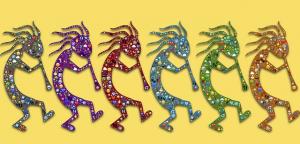 If you spend enough time around bookish young conservative types—particularly those of a high-church, historically-minded bent—you’ll soon come to see that more than a few harbor a sort of wistful longing for monarchic or aristocratic forms of government, or pretty much anything other than republican democracy. (At the margins, there’s some fascinating overlap with the far left.) Usually, this kind of thinking follows from reading copious amounts of Roger Scruton, Richard Weaver, Leo Strauss, or (more recently) Patrick Deneen.
If you spend enough time around bookish young conservative types—particularly those of a high-church, historically-minded bent—you’ll soon come to see that more than a few harbor a sort of wistful longing for monarchic or aristocratic forms of government, or pretty much anything other than republican democracy. (At the margins, there’s some fascinating overlap with the far left.) Usually, this kind of thinking follows from reading copious amounts of Roger Scruton, Richard Weaver, Leo Strauss, or (more recently) Patrick Deneen.
Critics like Theodor Adorno, of course, would suggest that this is reflective of an “authoritarian personality” and that anyone who harbors these views is a fascist in potentia. But at the end of the day, many—even most—of the folks who talk like this have little interest in actually wielding real-world power. Like many political thinkers past and present, they’re simply enamored with the idea of a “well-ordered” society—a sort of Christianized version of Plato’s Republic, where everything is in its proper place and everyone occupies their proper role. (Again, from a certain perspective, it’s not all that conceptually different from “from each according to his ability, to each according to his need.”)
But for better or worse, this particular vision has never appealed to me. I didn’t come to my views because I was aesthetically or theoretically attracted to some ancien regime or another; instead, my thinking is rooted in the simple conviction that there are enduring truths about reality that transcend social constructivism, coupled with a certain skepticism about the ability of flawed human beings to build a perfect regime. And in that spirit, I simply can’t find myself capable of getting excited about any civilizational order that functions like a perpetual motion machine, repeating the same rhythms over and over again ad infinitum.
Why, you may wonder? Well, it’s a bit complicated.
This month I’ve been reading Lewis Hyde’s 1998 book Trickster Makes This World: Mischief, Myth, and Art, a sprawling survey of the mythological/cultural (and Jungian psychoanalytic) archetype of the trickster. This figure of folklore travels under many guises (Hermes in Greek mythology, Coyote in Native American lore, Loki in the Norse eddas, and so on), but always plays a similar role in storytelling. The trickster is the figure who crosses between the boundaries of heaven and earth, or the sacred and the profane, always calling into question whether the lines are drawn in the correct place: Hermes steals Apollo’s sacred cows, Prometheus purloins the fire of the gods for the welfare of human beings, and so on.
From a sociological standpoint, the trickster spirit was epitomized by the medieval practice of “Carnival” that Charles Taylor memorably describes in A Secular Age. A pre-Lenten eruption of festivity and satire—and, yes, vice—within an otherwise strictly regimented social order, Carnival afforded an opportunity for commoner and noble alike to “blow off steam” before promptly repenting of one’s sins and submitting to the strict disciplines of the Lenten season. But even at its height, Carnival took place within certain limits: pompous bishops might be mocked in the town square, but the raucous festivities never spilled over into the sanctuaries of churches themselves. And so paradoxically, Carnival allowed for a way of affirming certain norms (acknowledging the sacredness of the Church) while simultaneously poking and prodding at others (lampooning the foibles of those who speak for it). Something like VeggieTales might be a modern-day, G-rated expression of the Carnival ethos: the videos are humorous takes on stories from the Bible, but Jesus Himself is never depicted in vegetable form.
To my mind, something like what Hyde describes as the trickster archetype is an essential part of any civilization worth living in. I live a pretty suburban-bourgeois life, but I’ve also always been drawn to banned books, controversial artworks, and ideas that hover at the boundaries of convention. To be sure, there are limits here that are associated with intellectual maturity: I wouldn’t give a Quentin Tarantino film or a James Joyce novel to my child, for instance. But I’d never deny that works like those have interesting and important things to say about the world, or that my Christian tradition of thought and practice ought to have the resources to see what is good and beautiful in them and respond to any challenges they pose. A living tradition, after all, is one that develops over time. And a culture that tries to stomp out the sensibility of the trickster—that cannot find any room for the Nikos Kazantzakises and José Saramagos and Vladimir Nabokovs of the world—is a culture that risks exchanging tradition for traditionalism, a kind of spiritual ossification that treats human beings less as sub-creators made in God’s image and more as little drones performing scripts.
This is not a sentiment that one tends to find among today’s defenders of integralism or any other “illiberal” right-wing political system—many of whom are keen to treat any deviance or eccentricity as a threat to the harmonious social order. Perhaps, given the contempt for traditional mores in a number of advanced Western democracies, that attitude is to be expected. Nonetheless, it seems to me that ruling the “spirit of the trickster” out of hand runs the theological risk of mistaking longstanding human conventions for points of natural law—just as, in a slightly different context, the priests of Jesus’s day confused whether the Sabbath was made for man or vice versa (Mark 2:27). A flourishing culture, as I see it, always requires a certain element of internal stress-testing.
Furthermore, I might speculate that differing instincts on this point among Christians are rooted in divergent understandings of eschatology—the end of all things and the final union of human beings with God. In a recent piece over at Conciliar Post, I distinguished between those who would see the final destiny of human beings as a kind of “simple stasis” or “repetitive stasis” and those who think in terms of epektasis, or a dynamic movement of the human soul toward ever-greater union with God. (I situate myself in the latter camp.)
I think, upon reflection, that I can press the argument even further than I did there. In writing about art, Christians sometimes use the terms “sublime” and “divine” almost as synonyms, but there is an important distinction between these two. Originally, the former word connoted the existence of something more beneath the surface of something perceived, a kind of intuition of the depth of a beauty still to be uncovered. If individual human beings will always remain finite relative to God (that is, remain creatures, even at the end of all things), they will always lack total capacity to comprehend the infinity of God. From the human vantage point, there will always be more of the Creator to be disclosed, and thus to be seen and apprehended by the human soul. The final vision of God at the end of all things will always be an encounter with the sublime, an invitation to go “further up and further in,” as C.S. Lewis put it, and be drawn ever closer to His beauty. At his best, the trickster serves as an agent of this eternal unveiling of the sublime, clearing away intellectual deadwood so that the light can blaze out more fully; the goal of all things is not to remain in a state of static reverence or to inhabit a perfectly structured polis, but to know and enter into the love of God ever more fully.
To the extent that his work prefigures that glorious revelation, it seems to me that the trickster—in whatever guise he may appear—really ought to have a place in our world. And if that inclusion disrupts the tidy balance of our political theory, perhaps it wasn’t the greatest theory in the first place.












